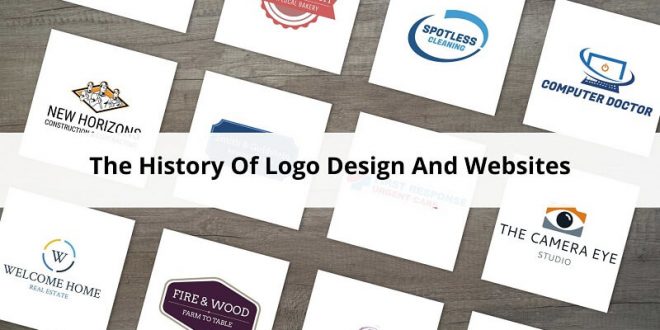In this article, we will discuss the history of logo design and websites. So keep reading.
In the contemporary marketing world, there are thousands of companies in all the segments of the economy, which boast iconic and instantly recognizable logos, that have become synonymous with their products.
With so much competition, creating an identity for a brand is a challenge, even hiring a well-known brand designer.
Internet marketing has made this even more difficult. To connect a company’s visual identity with its brand – a logo is now a must not only for companies, but for people, and the first tool.
Also, you can check: 5 Best Free Online Logo Designing Websites.
The largest players on the world market agree to invest multimillion-dollar budgets in the creation of the company’s main emblem, its trademark. It is difficult for a business without a logo to promote its product, to get a high consumer rating, to form an image of a successful and prosperous enterprise.
According to marketing researches, the person receives more than 10 000 advertising messages every day. In such a highly competitive environment, the effectiveness of advertising depends primarily on brand recognition and popularity.
It’s hard to overestimate the importance of branding in today’s world. The image of companies is built up over decades, and the logo guarantees the recognizability of the product.
The logo is not a new phenomenon. Even in ancient times, the Greeks and the Romans used pictograms and monograms. Moreover in the culture of the ancient Egyptians, Assyrians, Mayans, and other peoples, graphic prototypes of modern logos were widely used for different purposes.
In the Middle Ages already began to appear monograms – embroideries with the name of the owner or trading house. Besides, jewelers and merchants began to use full-fledged trade signs, and cattle were marked with a burned iron.
By the end of the 19th century, the first watermarks began to appear, and brand recognition continued to grow.
Today, few people think about the fact that the iconic Adidas three stripes logo was borrowed from another brand, Karhu Sports, or that the bright and friendly Chupa Chups emblem was designed by Salvador Dali in 1969.
The stories behind the world’s most famous badges are collected on 1000logos.net, where the logos are perfectly categorized and described. You would be surprised to know, that even the simplest and strictest logotypes might have a lot of interesting and significant details hidden in them, or that some fanciest and most ornate insignias were designed in the napkin, in a few seconds.
Almost all of the most iconic and recognizable logos of the companies are built on hidden meanings, which come out from the brands’ philosophy and principles, which were laid down at the very beginning of the companies formation.
The influence of advertising on modern society is really impressive: ladies want a Gucci bag, with its sleek double “G” monogram, and their kids — a Lego or Disney toy, only after seeing it on TV or the banner.
The right combination of marketing techniques and recognizable brands provides companies with millions of profit.
Sometimes people wonder – why do we need a logo? Can you do without it? The answer is simple: without a memorable symbol of the company, sales will be much lower.
Can you create a logo by yourself? Yes, but most likely, it will not work effectively. An example of a successful logo, created by a “brand” person is Billie Eilish Blohsh, a green or yellow abstract figure of a human, but it is more an exception than the rule.
The most famous emblems were created by big reputable agencies, such as Wolff Olins, Pentagram, or Landor Associates.
Such agencies not just make up the emblem for a brand, but create a complete corporate style, based on the logo. But still, a logo is the basis of corporate visual identity, the embodiment of the brand’s philosophy and principles.
Another example of a great logo is a Formula 1 insignia, which plunges you into the world of high speed, frantic drive, and passion. Speed is usually a number one theme for car brands, which are thinking of their badges.
The automaking industry is the record holder in the number of iconic emblems, as each badge, that is aimed to be placed on the bonnet of a car, has to be perfect — in terms of shape, exclusiveness, and memorability.
It is worth taking the most serious approach to the choice of a symbol of the company: do not assume that a bitten pear or an ornate font borrowed from a famous company will guarantee millions in sales.
Moreover, blatant copying can cause just the opposite effect: potential customers simply refuse to cooperate. In the era of the Internet, such a mistake will be all the more inexcusable.
Therefore, even if someone is sure of the genius of his decision on the company logo, it is always better to reinsure and contact professionals.
If you are thinking of creating a logo for your owns brand, it makes sense to read through the history of the successful examples, and the logo description websites are best for it. Look what others did, understand why, and make it better!
 free html design Free html design templates
free html design Free html design templates






